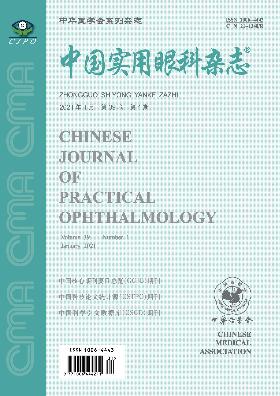Long term changes in biometric parameters of eye with primary angle closure suspect after laser peripheral iridotomy
引用次数: 0
Abstract
Objective To quantitatively evaluate the long-term changes in biometric characteristics parameters after laser peripheral iridotomy (LPI) in primary angle closure suspect (PACS). Methods A prospective case series study. 40 PACS patients in Handan Eye Hospital, Hebei were enrolled in five years. LPI was performed in one eye selected randomly of every case (LPI group) , the other was as naturally control eye. Routine ophthalmic tests and A-scan examination were performed on both eyes at presentation、1 year and 5 year after LPI, including central anterior chamber depth (CACD),lens thickness (LT) and axial length (AL). Results Compared to before LPI, CACD was significantly deeper at 1 year, but more shallow at 5 year (all P<0.05). CACD in LPI group was more deeper than that in control group at 1 year, 5 year (P<0.05) . Within 5 years, CACD was grad-ually decreased, but the CACD at 5 year in the laser group was still bigger than that in the control group (P<0.05). LT in both team were thick gradually within 5 years (P<0.05) . Conclusions LPI can significantly deepen the central anterior chamber and delay the central anterior chamber shallow in PACS. Key words: primary angle closure suspect; laser peripheral iridotomy; lens激光虹膜周围切开术后原发性闭角眼生物特征参数的长期变化
目的定量评价原发性闭角疑似患者激光虹膜周围切开术(LPI)术后生物特征参数的长期变化。方法前瞻性病例系列研究。选取河北省邯郸市眼科医院5年内PACS患者40例。每个病例随机选择一只眼(LPI组)进行LPI,另一只眼作为自然对照眼。就诊时、LPI术后1年和5年分别对双眼进行常规眼科检查和a扫描检查,包括中央前房深度(CACD)、晶状体厚度(LT)和眼轴长度(AL)。结果与LPI前比较,1年时CACD更深,5年时CACD更浅(均P<0.05)。LPI组在1年、5年的ccd深度高于对照组(P<0.05)。5年内,CACD逐渐下降,但激光组第5年的CACD仍大于对照组(P<0.05)。两组肝组织在5年内逐渐变厚(P<0.05)。结论LPI可使PACS中央前房明显加深,中央前房明显变浅。关键词:初级角闭合嫌疑;激光周围虹膜切开术;镜头
本文章由计算机程序翻译,如有差异,请以英文原文为准。
求助全文
约1分钟内获得全文
求助全文
来源期刊
自引率
0.00%
发文量
9101
期刊介绍:
China Practical Ophthalmology was founded in May 1983. It is supervised by the National Health Commission of the People's Republic of China, sponsored by the Chinese Medical Association and China Medical University, and publicly distributed at home and abroad. It is a national-level excellent core academic journal of comprehensive ophthalmology and a series of journals of the Chinese Medical Association.
China Practical Ophthalmology aims to guide and improve the theoretical level and actual clinical diagnosis and treatment ability of frontline ophthalmologists in my country. It is characterized by close integration with clinical practice, and timely publishes academic articles and scientific research results with high practical value to clinicians, so that readers can understand and use them, improve the theoretical level and diagnosis and treatment ability of ophthalmologists, help and support their innovative development, and is deeply welcomed and loved by ophthalmologists and readers.

 求助内容:
求助内容: 应助结果提醒方式:
应助结果提醒方式:


